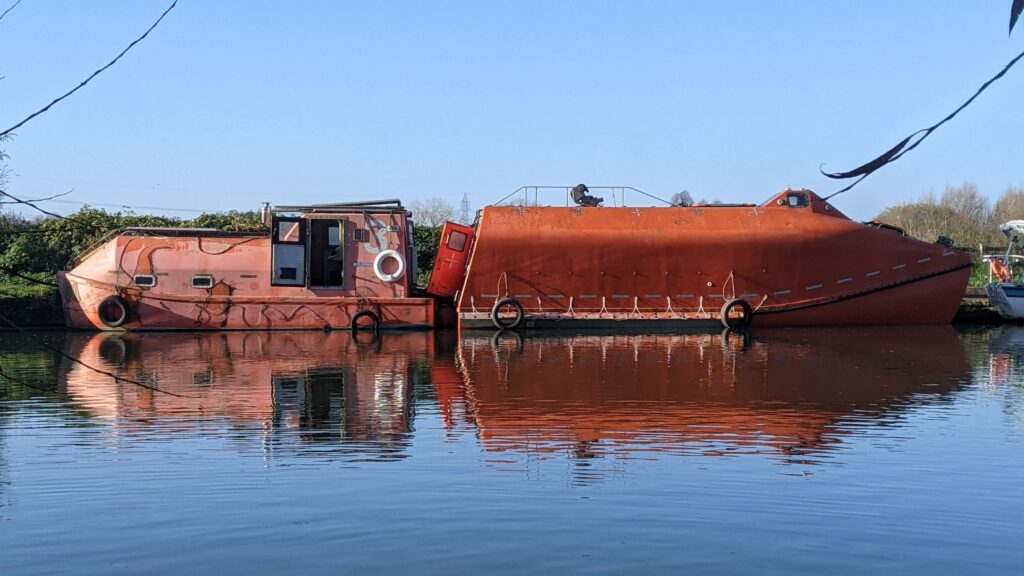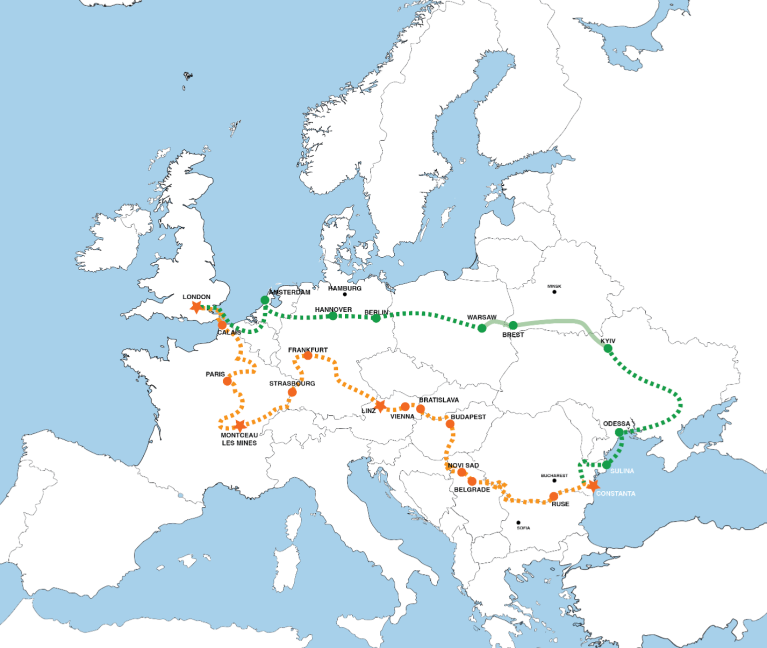Slow travel, there’s something special about taking the slow route, moving at just 8 km/h, feeling the rhythm of the water beneath you, and experiencing places in a way you never would when rushing from A to B.

This is #overlanding, but with a twist, overlanding by water. Instead of highways, we followed ancient trade routes, gliding through canals, rivers, and locks that have shaped Europe for centuries. Our vessel? A refurbished oil platform lifeboat, a rugged, self-sufficient craft that carried us deep into the continent’s heart.
The Journey, waterborne adventure, our route took us across Europe’s vast inland waterways, connecting landscapes, cultures, and histories. Each stretch of river and canal brought a new challenge and a fresh perspective on a continent that many only see from the motorways or rail lines. Some of the highlights:
- The Rhine River, Germany, A mix of industrial might and natural beauty, passing legendary castles perched on cliffs, thriving cities, and historic port towns. The river’s strong currents and busy commercial traffic kept things exciting. The Danube, Eastern Europe, A vast and wild waterway, stretching through multiple countries, from Austria to Romania. This river offered true off-grid adventure, with remote stretches of untamed nature, tiny riverside villages, and encounters with local boaters who still live by the rhythms of the water.
- The French Canals – A world of their own. Peaceful, meandering waterways winding through the French countryside, past vineyards, medieval towns, and stone bridges that have stood for centuries. Unlike the Rhine and Danube, these canals were more about relaxed travel, culture, and history.
- The Amsterdam to Belgium Route – A labyrinth of interconnected canals, bustling harbor cities, and picturesque waterways lined with windmills and historic trading towns. Navigating this network felt like unlocking a hidden Europe, one far from the usual tourist paths.

Like any true expedition, this journey came with its share of hardships and surprises. Boating across a continent is not simply floating down a river, it’s self-reliance, problem-solving, and adapting to the unknown.
The Challenges We Faced:
- Mechanical Fixes – Keeping an ex-oil platform lifeboat running on a #DIY budget was an ongoing challenge. From fixing leaks to repairing the old diesel engine, we had to be resourceful.
- Weather & Water Conditions – Strong currents, sudden storms, and fluctuating water levels made navigation unpredictable. Some stretches were calm and easy, while others tested our skills and endurance.
- Navigation & Locks – Unlike the open sea, Europe’s waterways are full of locks, bridges, and tidal zones that require careful planning. Some days felt like solving a giant puzzle, with different canals and rivers connecting at odd angles, each with their own set of rules and operating times.
- Remote Travel & Supplies – In the wilder sections, finding fuel, food, and spare parts required good planning. Some villages along the rivers still rely on weekly supply boats, a reminder of a slower, older way of life.
But the rewards? Unmatched, instead of rushing through Europe, we immersed ourselves in it. Instead of highways and train stations, we saw the heart of the continent, the back roads of the water. We watched sunrises over misty rivers, navigated narrow canals that felt like stepping into history, and met people who still live by the pace of the water. There’s a world beyond the tourist hubs, a Europe that exists outside the rush of modern travel, and the only way to experience it is to slow down and take the journey itself as the destination.